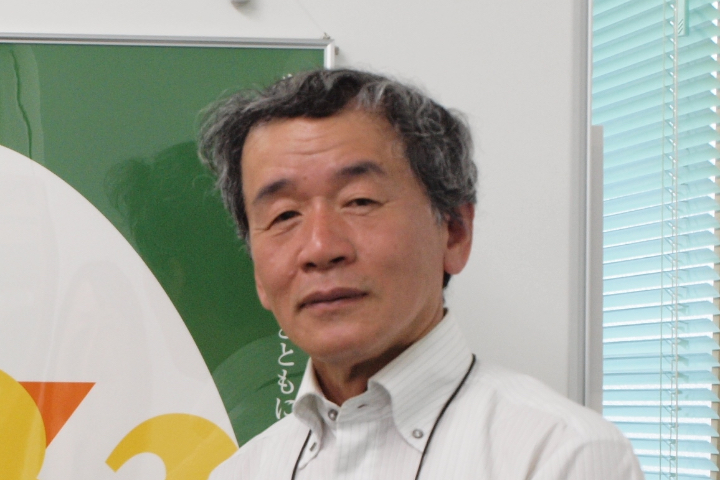What birds tell us Vol.3
The secret of red tree fruits and berries
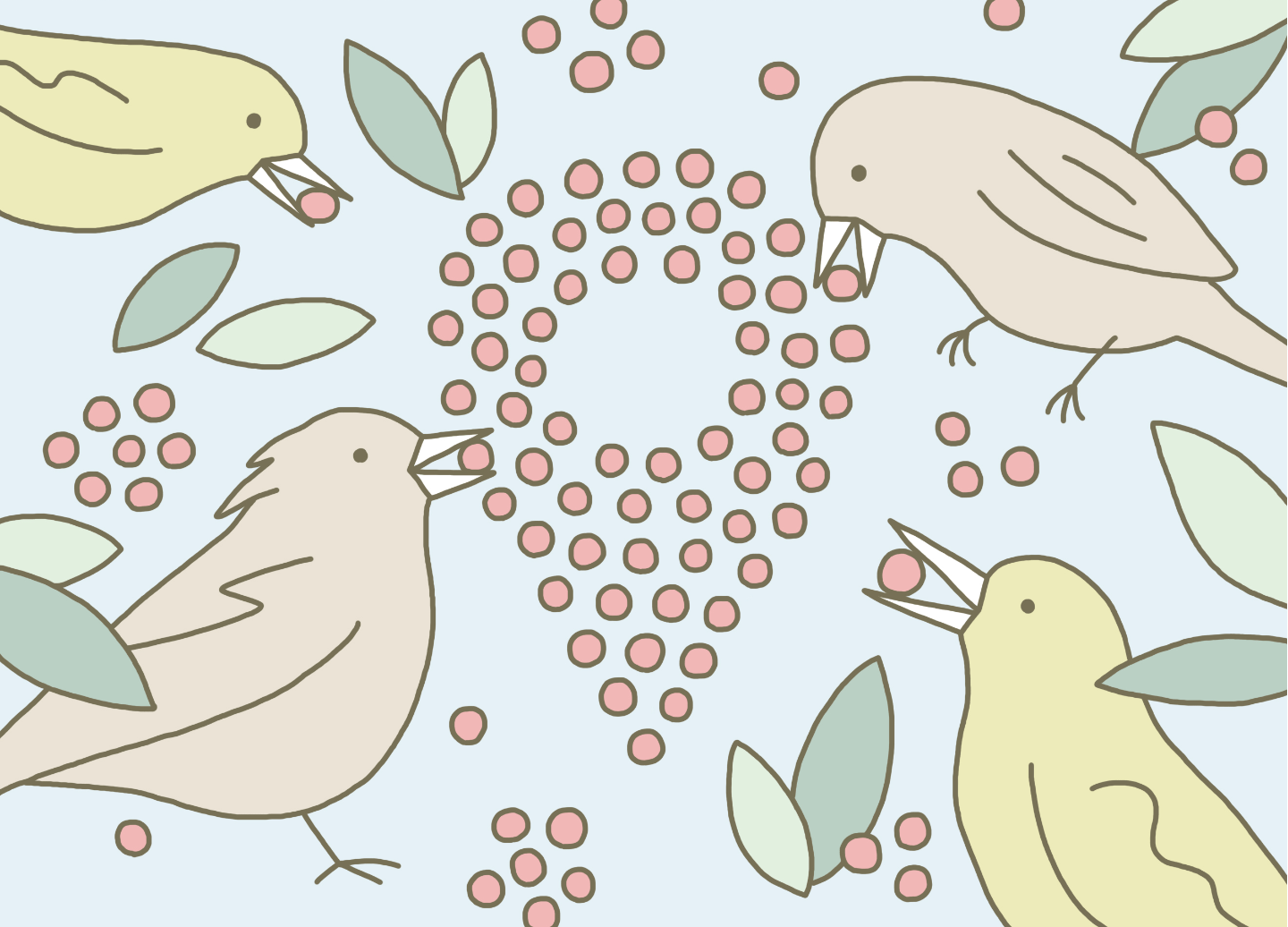

It is said that the ultimate goal of all living things, like humans, birds, or fish, is to procreate. However, plants, which do not have legs or wings, are limited in their ability to expand their habitat range since they cannot move on their own.
The various tactics employed by plants are well known; some, like the dandelion, enclose seed in a parachute ball that is carried by the wind, while others, such as the common cocklebur, disperse seed by having its thorny fruit cling to animal fur and human clothing.
This time, I will give some examples of how plants disperse seed and expand their habitat range using birds in particular.
As autumn turns to winter, the red fruits and berries dotting the landscape, such as those of linden arrowwood, the mochi tree, and idesia, catch our eye. The fruits of narrowleaf firethorn and sweet viburnum, which are often grown in city parks, and flowering dogwood, which lines city streets, are also red. An overwhelming number of the fruits and berries we see on trees during this season are red, and most of them are small in size, measuring only about one centimeter in diameter.
Why are small red fruits and berries so prevalent in nature during this season?
Japanese rowan is often planted alongside roads in Hokkaido and Nagano Prefecture. Before the first snow falls, the leaves of the Japanese rowan are green, and when red berries appear, complementing the green leaves, the red color stands out even to us humans. By producing red fruits that stand out, plants send a signal to birds saying, “There is delicious food here!”
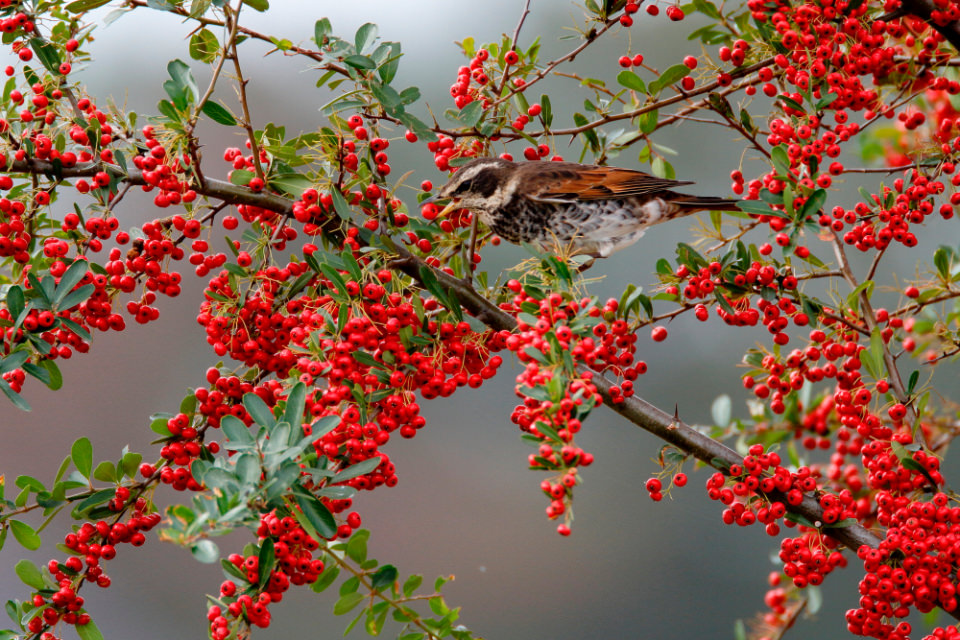
Late autumn into winter is a time when insects are scarce. The Brown-eared Bulbul and Japanese White-eye that were eating insects in the summer eat plenty of fruit during this time. Resident White-cheeked Starlings and Azure-winged Magpies also like fruit. When winter arrives, many species of thrush, including Naumann's Thrush and Pale Thrush, come to Japan for the winter. In fact, since plants get these birds to eat their fruit and carry their seed far distances, they have evolved small red fruits and berries.
There may be some who think that fruit being eaten up by birds would cause a problem for plants. But there is no need to worry. It is only the fleshy fruit surrounding the seeds that is digested when birds eat it; the seeds come out undamaged in the bird's droppings.
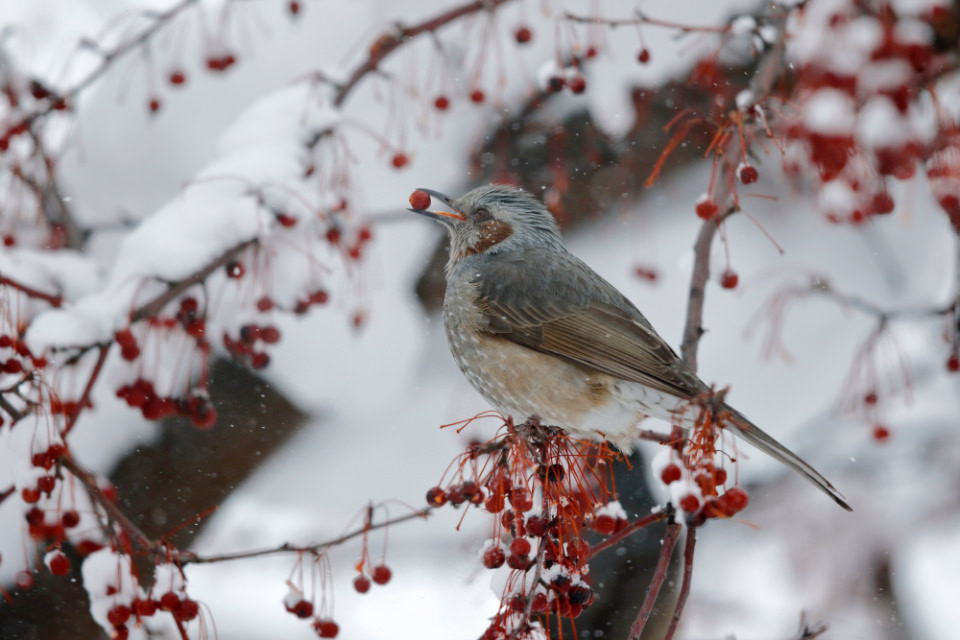
Why do we have delicious fruits such as apples, persimmons, and oranges in the first place? It cannot be that God created them just for humans. The large, wonderful fruit sold in supermarkets today is produced by specialized fruit growers, but the diet of our ancestors, who were hunters and gatherers, also included fruit.
However, the apples, persimmons, and oranges that our ancestors ate were smaller, sourer, and sometimes more bitter than what we have today. But for people who lived in the wilderness, fruit was a bountiful seasonal gift. Our ancestors would likely spread out into the forest in search of ripe fruit of the season. And, it is thought that those who found tasty fruit would keep the seeds and plant them in the area around where they lived so they could harvest the fruit close by at any time, thus becoming cultivators. Or, they may have started by using saplings that just happened to grow in an area where seeds had been thrown out. Such was the dawn of fruit cultivation in human history.
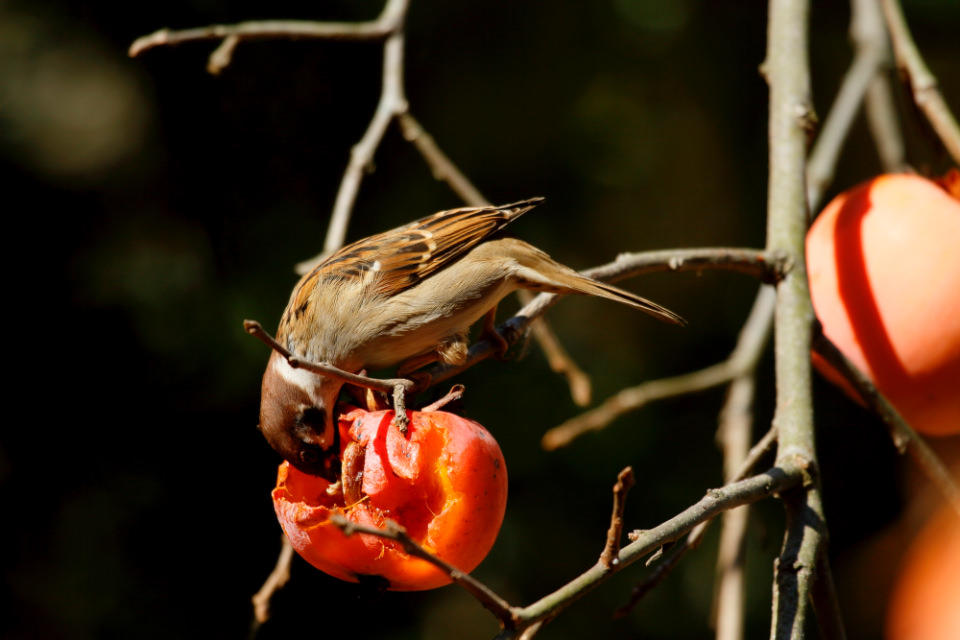
Incidentally, many red berries in the wild are not that tasty; they taste sour or bitter, or make the tongue tingle. Small red berries that people find tasty, such as raspberry varieties, Japanese bayberry, and silverberries, are very limited. In fact, a bird's sense of taste is quite different from a human's. We do not know how birds experience taste, but they seem to tolerate bitter flavors well. Anyway, birds that like fruit, such as the Brown-eared Bulbul and the Japanese White-eye, swallow fruit whole without biting it in the first place. So, aside from avoiding poisonous berries, they may not have any particular taste preference when it comes to fruit. In that regard, they are different from mammals that have teeth.
In the wild, plants make their red-colored fruit stand out, sending a signal to birds saying, “There is delicious fruit here!” However, the opposite is true for insects; the color red is difficult for them to distinguish. There are various insects that cause harm to seedlings (such as insects whose larvae feed on seedlings), and those ones can see ultraviolet light but not the color red. Red tree fruits are products of evolution in that they do not stand out to insects but, contrarily, can be clearly seen by birds that will carry off their seeds. The red coloring of the fruits that grow in autumn serves that very purpose.
Wildlife ecologist
Professor Emeritus, College of Science at Department of Life Science in Rikkyo University
Former President of the Ornithological Society of Japan
Born in 1950 in Osaka Prefecture. Areas of research include evolutionary ecology of plants and animals with particular focus on avian species, and also environmental issues. Vice-president and Trustee member of the Wild Bird Society of Japan. Currently works as editor in chief of Strix, a member-authored journal of field ornithology, published by the Wild Bird Society of Japan.
